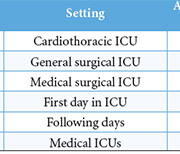Blood conservation with a patient dedicated arterial blood gas analyser
Anemia is a common complication of critical care, with up to 90% of ICU (Intensive Care Unit) patients being anemic by their third day in the ICU [1]. Anemia is associated with poor patient outcomes, especially amongst those patients with cardiovascular disease. The treatments of choice for anemia are the minimization of blood loss and the transfusion of red blood cells when necessary.
This article considers the issues in critical care around anemia, transfusions and blood conservation. With blood-based diagnostic testing being a significant factor in cumulative blood loss and the risk of anemia, the use of a patient dedicated arterial blood gas analyser to minimize blood loss is also described.
Anemia in the intensive care unit
Causes
The reasons for anemia in critically ill patients are multifactorial and include acute blood loss (e.g. from trauma, surgery or internal bleeding), iatrogenic blood loss associated with diagnostic sampling and blunted red blood cell production. Of these, blood loss associated with diagnostic testing is the factor that is most easily controlled by the intensivist.
Laboratory results are an important tool to achieve diagnosis and guide medical care, and a certain amount of blood is required to obtain this information. The gold standard for monitoring oxygenation, acid-base status and ventilation is an arterial blood gas measurement


